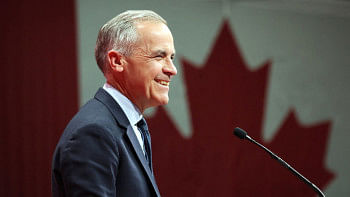Access to <i>khas</i> land: Alleviating poverty

Photo: Munem Wasif/ Drik news
Fifty year old Bishwanath Ghughu's life changed forever in April 2010 when he became the proud owner of an acre of khas land from Debhata Upazilla with the assistance of a non-government organisation (NGO) working in the southwest region of Bangladesh. Owning a piece of land multiplied his household income, and he also received 3,500 shrimp fries worth Tk. 2,190 and a fishing net for shrimp cultivation. He now works in the shrimp gher, and very recently sold three kilos of shrimp worth Tk. 1,450. Bishwanath never had the opportunity to attend school, but has enrolled his daughter in the local primary school.
Like Bishwanath, many other extreme poor households have received khas land permanently or on yearly lease basis in southwestern Bangladesh. Local NGOs in association with civil society members and local administration have created a "khas land identification and distribution model" which ensures access to land for the extreme poor and landless. The time has now come to replicate the model in other parts of the country to hasten the graduation of almost 3 crore 50 lakh people out of extreme poverty.
Research conducted by national and international development organisations has shown that "economic growth tends to accelerate when people can access land fairly and efficiently and when land tenure is secure. Analysis of 73 countries between 1960 and 2000 shows that those with more equitable initial land distribution achieved growth rates 2-3 times greater than those where land distribution was less equitable" (DFID policy paper 2007).
For Bangladesh, this could be valuable lesson to adhere to as the country aspires to increase its growth rate from the prevalent 5%. But for this growth to be pro-poor, the income disparity between the rich and the poor has to be minimised. According to government records, 80% of the country's poor, of whom 30% are extreme poor, live in the rural areas. Most of these households are landless and survive by selling labour, with monthly income of no more than Tk. 2,000 to Tk. 2,500. This is not enough to have three meals per day, let alone spending for essential requirements like clothing, health and education.
Monthly income sources of families like Sufia Begum's, who have received khas land, have been diversified and the additional income received from agricultural production can now be invested in other economic activities like poultry, dairy farming or small business endeavours. Government records have also shown a positive relationship between land ownership and increased spending on food, education and health. (Abul Barakat 2008). Thus, an important step in ensuring pro-poor growth through minimising income disparity is establishing the extreme poor people's ownership of or entitlement to assets and means of production -- like khas land and other capital assets.
Whether it is possible to distribute khas land among the landless and raise their income to a level that would assist in graduating from extreme poverty is an issue that needs mass awareness, public support and cooperation from all quarters of government administration. The relationship between the people and land is deep in Bangladesh society, but many millions of poor, especially landless families, are deprived of this relationship.
Nothing perhaps is closer and more fundamental to the requirements of human survival than land. As per official statistics, Bangladesh has 3.30 million acres of khas land, while the number of landless farm-households is 6-7 million. Thus, it is possible to give each household at least 0.50 acre of khas land.
To assist the process of khas land identification and equitable distribution, government policies and the regulatory framework -- especially "Land Reform Ordinance-1984" and khas land management and distribution policies of 1987 and 1997 -- provided concrete directions towards establishing national and local level committees for overseeing khas land identification and distribution, landless identification and prioritisation process, and a procedure for raising public support towards securing access to khas land.
All that is required now is to create an enabling environment so that land reform policies and regulatory frameworks can be efficiently implemented helping to achieve the Millennium Development Goal (MDG 1) of halving the number of extreme poor people by 2015.
The role of NGOs in creating mass awareness on the issues of poverty eradication and access to khas land, assisting local administration in the process of khas land identification and distribution, and in providing legal support to the extreme poor landless families can be applauded for accelerating government action.
One such organisation has been working in the coastal regions of Satkhira and Khulna focusing on this issue since 1985. Thanks to its initiatives the government has recovered a large amount of land from illegal occupants and, as of August 2010, the NGO has facilitated the process of recovering and distributing a total of 8,528.9 acres of khas land for 12,474 families (2069.20 acres as permanent settlement for 2,692 families and 6,459.7 acres as temporary settlement for 9,782 families), thus changing the economic situation of households like Bishwanath's for the better. The government's determination towards achieving the MDGs can definitely strengthen the impact of access to land in poverty eradication.

 For all latest news, follow The Daily Star's Google News channel.
For all latest news, follow The Daily Star's Google News channel. 



Comments